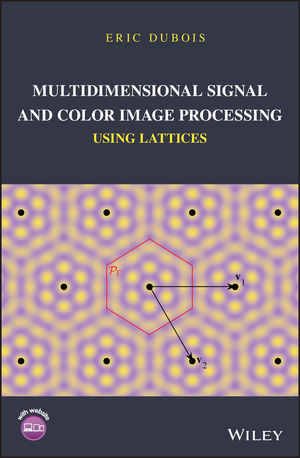- Our Story
- Publications & Resources
- Publications & Resources
- Publications
- IEEE Signal Processing Magazine
- IEEE Journal of Selected Topics in Signal Processing
- IEEE Signal Processing Letters
- IEEE Transactions on Computational Imaging
- IEEE Transactions on Image Processing
- IEEE Transactions on Information Forensics and Security
- IEEE Transactions on Multimedia
- IEEE Transactions on Signal and Information Processing over Networks
- IEEE Transactions on Signal Processing
- IEEE TCI
- IEEE TSIPN
- Data & Challenges
- Submit Manuscript
- Guidelines
- Information for Authors
- Special Issue Deadlines
- Overview Articles
- Top Accessed Articles
- SPS Newsletter
- SigPort
- SPS Resource Center
- Publications FAQ
- Blog
- News
- Dataset Papers
- Conferences & Events
- Community & Involvement
- Professional Development
- For Volunteers
- Information for Authors-OJSP
-
Home
Conferences Events IEEE Signal Processing Magazine IEEE SPL Article IEEE TIFS Article IEEE TMM Article IEEE TSP Article Jobs in Signal Processing Lectures Machine Learning Seasonal Schools Signal Processing News SPM Article SPS Distinguished Lectures SPS Newsletter Article SPS Webinar SPS Webinars SPS Webinar Series Webinar webinars
-
Our Story
What is Signal Processing?

The technology we use, and even rely on, in our everyday lives –computers, radios, video, cell phones – is enabled by signal processing. Learn More » -
Publications & Resources
-
SPS Resources
- Signal Processing Magazine The premier publication of the society.
- SPS Newsletter Monthly updates in Signal Processing
- SPS Resource Center Online library of tutorials, lectures, and presentations.
- SigPort Online repository for reports, papers, and more.
- SPS Feed The latest news, events, and more from the world of Signal Processing.
-
SPS Resources
-
Conferences & Events
-
Community & Involvement
-
Membership
- Join SPS The IEEE Signal Processing Magazine, Conference, Discounts, Awards, Collaborations, and more!
- Chapter Locator Find your local chapter and connect with fellow industry professionals, academics and students
- Women in Signal Processing Networking and engagement opportunities for women across signal processing disciplines
- Students Scholarships, conference discounts, travel grants, SP Cup, VIP Cup, 5-MICC
- Young Professionals Career development opportunities, networking
- Get Involved
-
Technical Committees
- Applied Signal Processing Systems
- Audio and Acoustic Signal Processing
- Bio Imaging and Signal Processing
- Computational Imaging
- Image Video and Multidimensional Signal Processing
- Information Forensics and Security
- Machine Learning for Signal Processing
- Multimedia Signal Processing
- Sensor Array and Multichannel
- Signal Processing for Communication and Networking
- Signal Processing Theory and Methods
- Speech and Language Processing
- Technical Working Groups
- More TC Resources
-
Membership
-
Professional Development
-
Professional Development
- Signal Processing Mentorship Academy (SigMA) Program
- Micro Mentoring Experience Program (MiME)
- Distinguished Lecturer Program
- Distinguished Lecturers
- Distinguished Lecturer Nominations
- Past Lecturers
- Distinguished Industry Speaker Program
- Distinguished Industry Speakers
- Distinguished Industry Speaker Nominations
- Industry Resources
- IEEE Training Materials
- Jobs in Signal Processing: IEEE Job Site
-
Career Resources
- SPS Education Program Educational content in signal processing and related fields.
- Distinguished Lecturer Program Chapters have access to educators and authors in the fields of Signal Processing
- Job Opportunities Signal Processing and Technical Committee specific job opportunities
- Job Submission Form Employers may submit opportunities in the area of Signal Processing.
-
Professional Development
-
For Volunteers
-
For Board & Committee Members
- Board Agenda/Minutes* Agendas, minutes and supporting documentation for Board and Committee Members
- SPS Directory* Directory of volunteers, society and division directory for Board and Committee Members.
- Membership Development Reports* Insight into the Society’s month-over-month and year-over-year growths and declines for Board and Committee Members
-
For Board & Committee Members
Popular Pages
Today's:
- SPS JSTSP Webinar: Distributed Signal Processing for Extremely Large-Scale Antenna Array Systems
- Information for Authors
- Submit a Manuscript
- IEEE Transactions on Multimedia
- IEEE Journal of Selected Topics in Signal Processing
- (ASRU 2025) 2025 IEEE Automatic Speech Recognition and Understanding Workshop
- IEEE Transactions on Image Processing
- IEEE Transactions on Signal Processing
- IEEE Transactions on Information Forensics and Security
- Conference Call for Papers
- Call For Proposals: IEEE ICIP 2026
- (ICME 2026) 2026 IEEE International Conference on Multimedia and Expo
- SPS Scholarship Program
- Call for Nominations for the IEEE Transactions on Medical Imaging (TMI) Best Paper Award
- IEEE Signal Processing Letters
All time:
- Information for Authors
- Submit a Manuscript
- IEEE Transactions on Image Processing
- IEEE Transactions on Information Forensics and Security
- IEEE Transactions on Multimedia
- IEEE Transactions on Audio, Speech and Language Processing
- IEEE Signal Processing Letters
- IEEE Transactions on Signal Processing
- Conferences & Events
- IEEE Journal of Selected Topics in Signal Processing
- Information for Authors-SPL
- Conference Call for Papers
- Signal Processing 101
- IEEE Signal Processing Magazine
- Guidelines
Last viewed:
- Job Opportunities in Signal Processing
- Higher-Order GNNs Meet Efficiency: Sparse Sobolev Graph Neural Networks
- Conference Call for Papers
- Call For Proposals: IEEE ICIP 2026
- State of the Society
- Martin Haardt
- Information for Authors-SPL
- (ICASSP 2024) 2024 IEEE International Conference on Acoustics, Speech and Signal Processing
- SPS Conference Sponsorship Information
- New Books from IEEE SP Society Website
- (ICASSP 2026) 2026 IEEE International Conference on Acoustics, Speech, and Signal Processing
- IEEE Signal Processing Letters
- Information for Authors
- IEEE Fellows Program
- 2010 IEEE Signal Processing Society Awards Announced
Multidimensional Signal and Color Image Processing Using Lattices
You are here
Newsletter Menu
Newsletter Categories
Top Reasons to Join SPS Today!
1. IEEE Signal Processing Magazine
2. Signal Processing Digital Library*
3. Inside Signal Processing Newsletter
4. SPS Resource Center
5. Career advancement & recognition
6. Discounts on conferences and publications
7. Professional networking
8. Communities for students, young professionals, and women
9. Volunteer opportunities
10. Coming soon! PDH/CEU credits
Click here to learn more.
News and Resources for Members of the IEEE Signal Processing Society
Multidimensional Signal and Color Image Processing Using Lattices
Multidimensional Signal and Color Image Processing Using Lattices
Author: Professor Eric Dubois is Emeritus Professor at the University of Ottawa, Canada, a Life Fellow of the Institute of Electrical and Electronic Engineers and a Fellow of the Engineering Institute of Canada. He is a recipient of the 2013 George S. Glinski Award for Excellence in Research from the Faculty of Engineering at the University of Ottawa. His current research is focused on stereoscopic and multiview imaging, image sampling theory, image-based virtual environments and color signal processing.
Publisher: Wiley
URL: www.wiley.com/go/Dubois/multiSP
Year: 2019
This volume develops the theory of multidimensional signal processing where input and output are either scalar or vector-valued signals. Vector-valued signals are specifically used to model color images. The approach is largely based on lattices. Non-rectangular sampling is very widespread; for example, virtually every camera and display device incorporates non-rectanglular sampling. Thus, the book considers signals sampled on lattices from the outset, with rectangular sampling as a special case. Lattices are also used to describe signal periodicity, which is key to fast Fourier transform algorithms. While most treatments use normalized basis-dependent representations for non-rectangular sampling, this approach obscures much of the geometrical and scale information of the signal. In contrast, this book uses actual units of space-time and frequency. Basis-independent representations are used as much as possible, and the basis is introduced where needed to perform calculations or implementations. Basic features of the book include:
- an entire chapter on lattices, giving the reader a thorough grounding in the use of lattices in signal processing;
- extensive treatment of lattices as used to describe discrete-domain signals and signal periodicities;
- separate treatment of continuous-domain signals, discrete-domain signals and both continuous-domain and discrete-domain periodic signals;
- chapters on the vector-space representation of color, and processing of vector-valued color signals;
- chapters on sampling and reconstruction, random field models, and symmetry invariant signals;
- supplemented throughout with MATLAB examples and accompanying downloadable source code.
- MATLAB code for the examples and figures in the book are available on the Companion Web Site found at http://www.site.uottawa.ca/~edubois/mdsp/. On this web site, there is also a solutions manual for all the problems included in the book.
Open Calls
Society News
- Call for Nominations for Editor-in-Chief: IEEE Open Journal of Signal Processing
- The SPS Resource Center: Webinars, Conference Videos, Tutorials, and much more…
- Announcing the New Signal Processing Society Open Access Journal: IEEE Open Journal of Signal Processing
- New SPS video: Signal Processing for Wi-Fi
- Call for Nominations: Fellow Evaluation Committee - Chair and Vice Chair Positions
- Job Opportunities in Signal Processing
- Process Change for Member Driven Initiative Proposals
- Call for Officer Nominations: Vice President-Membership and Vice President-Education
- OU Analytics - A Valuable Resource for Volunteers
- Nominations Open for 2019 SPS Awards
- IEEE Day 2019
- Redesigned OU Monthly Statistics Now Available
- Upcoming Distinguished Lectures
Publications News
- SPS Publications Alert: July 2019 Tables of Contents
- New Benefits for SPS Student Branch Chapters
- Special Issue on Signal Processing Advances for Non-Orthogonal Multiple Access in Next Generation Wireless Networks
- Special Issue on Real-Time Networks and Protocols for Factory Automation and Process Control Systems
- Special Issue on Advances in Radar Systems for Modern Civilian and Commercial Applications I
Conferences & Events
SPS Social Media
- IEEE SPS Facebook Page https://www.facebook.com/ieeeSPS
- IEEE SPS X Page https://x.com/IEEEsps
- IEEE SPS Instagram Page https://www.instagram.com/ieeesps/?hl=en
- IEEE SPS LinkedIn Page https://www.linkedin.com/company/ieeesps/
- IEEE SPS YouTube Channel https://www.youtube.com/ieeeSPS
Home | Sitemap | Contact | Accessibility | Nondiscrimination Policy | IEEE Ethics Reporting | IEEE Privacy Policy | Terms | Feedback
© Copyright 2025 IEEE - All rights reserved. Use of this website signifies your agreement to the IEEE Terms and Conditions.
A public charity, IEEE is the world's largest technical professional organization dedicated to advancing technology for the benefit of humanity.









